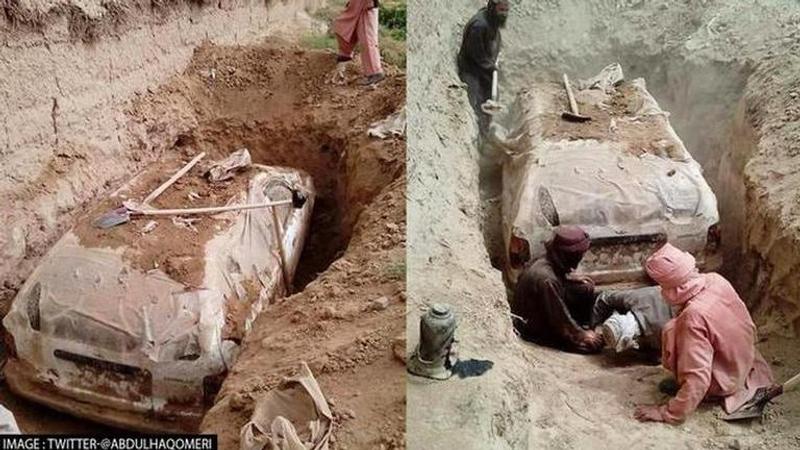Published 19:37 IST, July 5th 2022
Taliban unearths Mullah Omar's vehicle, to display it at Afghan National Museum: Report
The Taliban have dug up the vehicle of their founder, Mullah Omar, who once hid his vehicle by burying it when US forces invaded Afghanistan in 2001.

Advertisement
When US forces invaded Afghanistan in 2001 as retaliation for the 9/11 terrorist attacks, Mullah Omar, the elusive and reclusive Taliban founder with one eye, once hid his vehicle by burying it. According to a report published on July 5 by The Express Tribune, in Zabul province, where it was interred 21 years ago, the Taliban have now, in 2022, dug up the vehicle of their founder.
When Mullah Omar arrived in the southern Afghan province of Zabul from Kandahar, he buried the Toyota car. The vehicle was discovered mostly undamaged and wrapped in plastic. However, the media agency reported quoting a local that the front mirror was damaged. The report added that the vehicle would soon be on display at the Afghan National Museum.
Mullah Omar, who was born in 1960 and grew up in the southern Afghan province of Kandahar, fought alongside Afghan forces against the Soviet Union in the 1980s and suffered the loss of his right eye. While some media reports claim that the Taliban leader treated himself at a hospital in one of the neighbouring countries, others claim he had his injured eye amputated by himself.
Omar is rumoured to have returned to his hometown as a leader of prayers and a teacher after the Soviets withdrew in 1989. He gathered a group of college students who are later credited with founding the Taliban. In 1996, under Omar's leadership, the Taliban seized control of Kabul, however, in 2001, a US-led invasion forced them to relinquish power.
Omar was regarded by the Taliban as a pillar of unity
Omar was regarded by the Taliban as a pillar of unity during their uprising against the Afghan government and foreign troops. His passing in 2013, reportedly brought on by disease, was kept a secret by the organisation until July 2015. Throughout its existence, the Taliban struggled with increasing factionalism; the turbulent events of 2015 are one recent example.
The death of its founder, Mullah Omar, in 2013 and the subsequent death of his successor, Mullah Akhtar Mansour, sent shockwaves through the movement. Making room for new schisms and internal strife to emerge. Despite its membership changing over time, the group managed to remain cohesive given its loose organisational structure and the high degree of autonomy enjoyed by its militants fighting the Afghan security forces.
Image: Twitter/@AbdulhaqOmeri
Updated 19:37 IST, July 5th 2022




